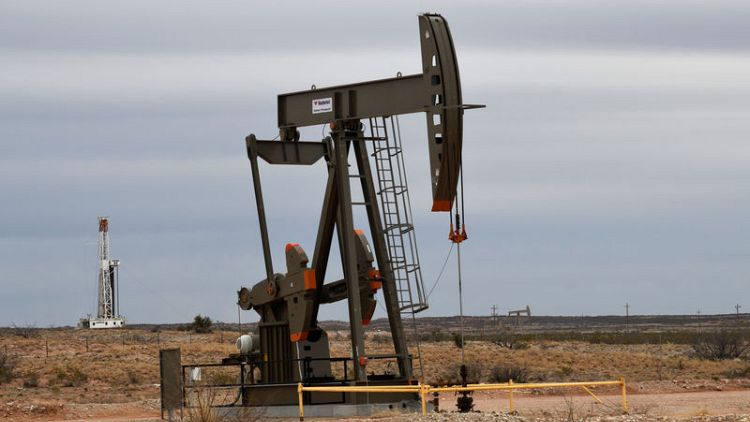By Jessica Resnick-Ault
NEW YORK (Reuters) - Oil prices hit their highest in about six months on Tuesday as sources said Gulf OPEC members were ready to raise output only if there was demand before offsetting any shortfall following a U.S. decision to end waivers for buyers of Iranian crude.
Output in Saudi Arabia, the world's top oil exporter and de facto leader of the Organization of the Petroleum Exporting Countries, will rise in May, but that it is not related to Iran sanctions, the sources said.
The sources said Saudi production in May will also still within its production target under a OPEC+ supply-cutting deal, which has led global supply cuts since the start of the year aimed at propping up crude prices. The group is set to meet in June to discuss output policy.
The United States on Monday demanded that buyers of Iranian oil stop purchases by May 1 or face sanctions, ending six months of waivers which allowed Iran's eight biggest buyers, most of them in Asia, to continue importing limited volumes.
U.S. President Donald Trump said he was confident that Saudi Arabia and the United Arab Emirates will fulfill their pledges to make up the difference in oil markets, a U.S. official told reporters Monday.
"The Saudis aren't rushing to fill what could be a substantial supply gap in the market," said John Kilduff, a partner at Again Capital Management LLC. "The market has gotten tight globally over the course of the last several months, primarily because of the efforts of Saudi Arabia."
U.S. crude futures settled up 75 cents, or 1.1 percent, at $66.30 a barrel, after hitting an intraday high of $66.60, the highest since Oct. 31.
Brent crude rose 47 cents, or 0.6 percent, to $74.51 a barrel. The global benchmark earlier touched $74.73, a level not seen since Nov. 1.
Before the reimposition of sanctions last year, Iran was the fourth-largest producer among the Organization of the Petroleum Exporting Countries at around 3 million barrels per day (bpd), but April exports have shrunk to below 1 million bpd, according to tanker data and industry sources.
For a graphic on Iran seaborne crude oil & condensate exports, click: https://tmsnrt.rs/2DE8CHt
The market structure for U.S. crude changed Monday, with the front month trading at a premium to the next month. The trend, known as backwardation, intensified on Tuesday with the largest premium since December.
Brent was also in backwardation, hitting its highest front-month premium in three weeks.
"The backwardation is indicative of what is really driving things," Again's Kilduff said.
The premium for front-month crude shows that the immediate supply constraints are seen as time-limited, given Saudi Arabia's ability to tap excess capacity, he said.
China, Iran's largest customer with imports of about 585,400 bpd of crude oil last year, formally complained to Washington over the move, which a Chinese foreign ministry spokesman said "will contribute to volatility in the Middle East and in the international energy market".
The move to increase pressure on Iran came amid other sanctions Washington has placed on Venezuela's oil exports and as combat threatens to disrupt Libya's exports.
For a graphic on Russian, U.S. & Saudi crude oil production, click: https://tmsnrt.rs/2EUHeFO
U.S. crude oil inventories were expected to have risen while refined products likely fell last week, an Reuters poll showed on Tuesday.
The poll was conducted ahead of reports from the American Petroleum Institute (API), an industry group, and the Energy Information Administration (EIA), an agency of the U.S. Department of Energy.
The API is scheduled to release its data for the latest week at 4:30 p.m. EDT (2030 GMT) on Tuesday, and the weekly EIA report is due at 10:30 a.m. EDT on Wednesday.
(Additional reporting by Henning Gloystein in Singapore and Noah Browning in London; Editing by Marguerita Choy and Kirsten Donovan)



